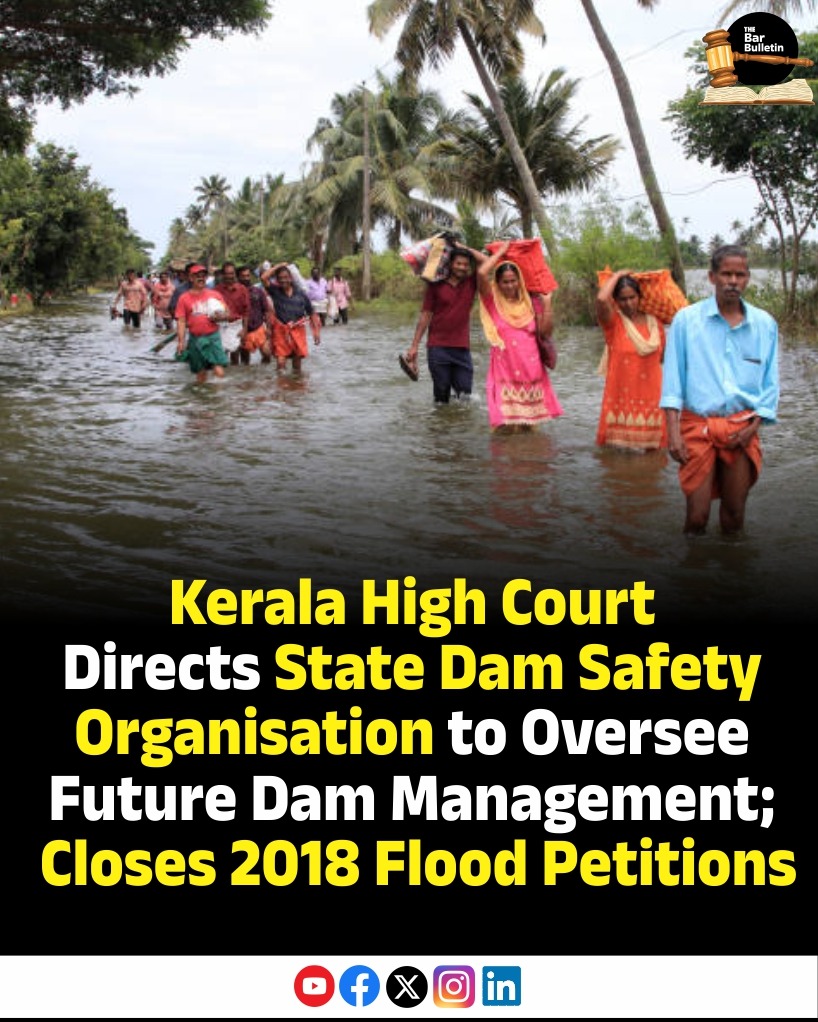The Kerala High Court(Ernakulam Bench) heard the final batch of petitions pertaining to the Kerala Floods of 2018. The Chief Justice Nitin Jamdar and Justice Nitin Balaji closed the petition after acknowledging that the respondent (State) had founded a State Dam Safety Organisation, a statutory authority to plan and oversee the plan of action on issues that have been raised in the petitions.
The case arose when forty petitions were filed following the unprecedented floods in Kerala in August 2018, which caused massive loss of life, property, and infrastructure. The petitions were divided into two batches: the first sought compensation and rehabilitation, while the second addressed flood control and dam management. The present judgment dealt with the second batch. The matters were first heard on September 12, 2018, concerning the release and management of water from Kerala’s dams during the floods. Several interim orders were passed between 2018 and 2019, including the 14 November 2018 order, which narrowed the scope of enquiry to dam management to prevent future disasters.
The Court appointed Amicus Curiae Mr. Jacob P. Alex, whose report dated March 27 2019 highlighted that none of Kerala’s 79 dams were used for flood control, reservoirs remained high, sudden water releases occurred, and flood warnings were inadequate. He recommended measures such as Flood Plain Zoning, Inundation Maps, Emergency Action Plans, updated Rule Curves, dam-specific O&M manuals, and a Flood Forecasting System. Over the years, the respondents implemented extensive reforms, as documented in the 2020 suo motu case proceedings. These included multi-level monsoon preparedness meetings chaired by the Chief Minister, Chief Secretary, and State Relief Commissioner; the Rule Curve Monitoring Committee to regulate dam water levels; coordination with the Central Water Commission for flood forecasting; and operationalization of the Orange Book for Disaster Management – II, which provided color-coded alerts, detailed dam operation protocols, and inter-departmental coordination. The respondents also launched KaWaCHAM (Kerala Warnings, Hazards, and Crisis Management System which integrated geospatial data, hazard maps, climate scenarios, and real-time sensor data to ensure timely multi-channel alert dissemination across all emergency operations centres. These measures, along with public awareness campaigns and district/taluk emergency control rooms, substantially strengthened Kerala’s disaster preparedness.
Furthermore, after the enactment of the Dam Safety Act, 2021, the respondents established the Kerala State Dam Safety Organisation on November 7. 2022 to oversee dam safety and regulation.
The Court observed that in view of these extensive steps, the issues raised had been substantively addressed. It directed that the records be placed before the Kerala State Dam Safety Organisation, to consider any remaining suggestions, confining its role strictly to dam management to prevent future flood devastation.
The Court thus closed the proceedings, recorded appreciation for the assistance of the Amicus Curiae, noted that all pending interlocutory applications stood closed, and left open the possibility for any public-spirited individual or organization to approach the Court if further directions became necessary.
For the Petitioners: Sri. Godwin Joseph, Smt. Tanoosha Paul
For the Respondents: Sri. S. Ramesh Babu (Sr.), Smt. O. M. Shalina, DSGI, Sri. S. Subhash Chand, Sri. P. Vijayakumar, ASG of India, Sri. N. Krishna Prasad, Sri. Imam Grigorios Karat, Sri. T. C. Krishna, Senior Panel Counsel, Sri. Jacob P. Alex(Amicus Curiae), Sri. V. Tekchand (Senior Govt PP)

